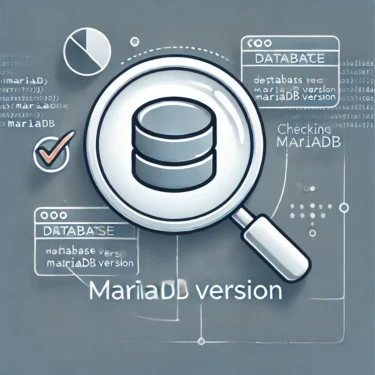目次
1. What are MySQL user privileges
MySQL user privileges are settings that control what actions each user can perform within the database. Proper privilege configuration helps prevent unauthorized access and unintended operations.Common Types of Privileges
SELECT: Allows reading data.INSERT: Allows adding data.UPDATE: Allows modifying existing data.DELETE: Allows deleting data.CREATE: Allows creating new databases or tables.DROP: Allows dropping existing databases or tables.ALL PRIVILEGES: Grants all privileges, including the above, to the user.
2. How to Check User Privileges
In MySQL, you can check user privileges with specific commands.Checking the Current User
To see the username used in the current session, use the following command.SELECT USER();SELECT CURRENT_USER();Checking a Specific User’s Privileges
To see the privileges granted to a specific user, use the following command.SHOW GRANTS FOR 'username'@'hostname';example_user:SHOW GRANTS FOR 'example_user'@'localhost';Listing All Users
To view all users and host information in the database, use the following command.SELECT user, host FROM mysql.user;user table in the mysql database and displays a list of all users.
3. Granting and Revoking User Privileges
In MySQL, you can grant or revoke privileges for users. Proper privilege management can improve security.Granting Privileges
To grant privileges to a new user, use theGRANT statement.GRANT privilege_name ON database_name.* TO 'user_name'@'host_name';SELECT privilege on all tables of example_db to example_user:GRANT SELECT ON example_db.* TO 'example_user'@'localhost';Granting Multiple Privileges at Once
You can also grant multiple privileges simultaneously.GRANT SELECT, INSERT, UPDATE ON example_db.* TO 'example_user'@'localhost';Revoking Privileges
To remove unnecessary privileges, use theREVOKE statement.REVOKE privilege_name ON database_name.* FROM 'user_name'@'host_name';INSERT privilege on example_db from example_user:REVOKE INSERT ON example_db.* FROM 'example_user'@'localhost';ALL PRIVILEGES as follows.REVOKE ALL PRIVILEGES ON example_db.* FROM 'example_user'@'localhost';4. Best Practices for Permission Management
Effective permission management enhances database security and operational efficiency. Below are the best practices.Least Privilege Principle
By granting users only the minimal permissions necessary to perform their duties, you reduce the risk of mistakes and unauthorized access.Regular Review of Permissions
Regularly review permissions in line with changes in user roles and responsibilities, and promptly remove any unnecessary permissions.Implementing Role-Based Access Control (RBAC)
Create user groups (roles) with common permission sets and assign roles to users, making permission management simple and efficient.Utilizing Audit Logs
By recording user activity as audit logs and reviewing them regularly, you can detect unauthorized actions or abnormal behavior early.5. Frequently Asked Questions (FAQ)
Q1: How do I verify whether a specific user can access multiple databases?
SHOW GRANTS FOR 'username'@'hostname'; By using this, you can list all privileges that have been granted to that user for every database.Q2: How can I grant or revoke multiple privileges at once?
GRANT and REVOKE statements can be used, separating privileges with commas to operate on multiple privileges at once. For example, you can write GRANT SELECT, INSERT, UPDATE ON example_db.* TO 'username'@'localhost';.Q3: How do I restore privileges that were accidentally revoked?
If privileges have been revoked, you need to re‑grant them using theGRANT command. It is recommended to note the revoked privileges or keep a backup of the configuration before changes.Q4: Is it possible to grant privileges only on a specific table?
Yes. By using the formatGRANT privilege_name ON database_name.table_name TO 'username'@'hostname';, you can grant privileges only on that specific table.6. Summary
MySQL user privilege management has a major impact on database security and operational safety. Proper privilege management helps improve data safety and efficiency.Key Points of Privilege Management
- Follow the principle of least privilege
- Conduct regular reviews
- Leverage audit logs to detect and monitor abnormal activities



